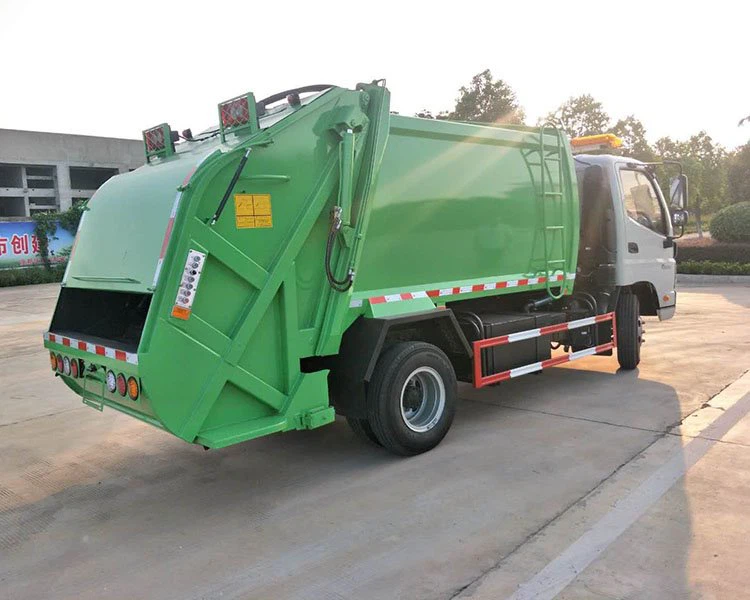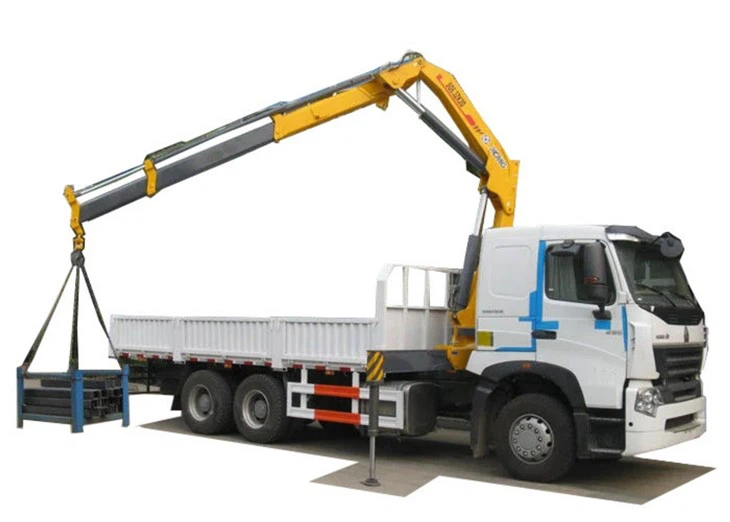Understanding Automated Side Loaders: Revolutionizing Waste Management

In today’s fast-paced world, businesses are constantly seeking ways to improve efficiency and reduce costs. One of the most innovative solutions in the waste management industry is the automated side loader. This advanced machinery streamlines the collection of waste and recyclables, enhancing operational productivity. In this article, we will explore the features, benefits, and applications of automated side loaders, as well as provide practical tips for their use.
What is an Automated Side Loader?

An automated side loader is a specially designed waste collection vehicle equipped with advanced hydraulic systems and automated mechanisms. It is primarily used for the collection and disposal of municipal solid waste and recycling materials. The key feature of these vehicles is their ability to lift, dump, and compact waste without the need for manual labor, significantly reducing the physical strain on workers and increasing collection efficiency.
Key Features of Automated Side Loaders
- Mechanical Arm: A hydraulic arm allows for easy lifting of bins, minimizing physical effort.
- Compaction System: Compacts waste inside the truck to maximize storage capacity.
- Control Systems: Operators can manage the entire process from inside the cab, enhancing safety and comfort.
- Durable Design: Built to withstand harsh operating conditions and heavy usage.
Types of Automated Side Loaders
- Front-Loading Automated Side Loaders: Ideal for residential areas where bins are placed at the front.
- Rear-Loading Automated Side Loaders: Commonly used in commercial settings; access from the back for efficient dumping.
- Dual-Compartment Loaders: Designed to separate recyclables and waste, promoting better waste management practices.
Benefits of Automated Side Loaders
Utilizing automated side loaders provides numerous advantages for waste collection companies and municipalities. Here are some of the most significant benefits:
1. Enhanced Efficiency
Automated side loaders can significantly increase the speed of waste collection. Their hydraulic systems allow for quicker loading cycles, leading to more stops in less time.
2. Improved Safety
With operators controlling the machinery from the safety of the cabin, the risk of injury associated with manual waste collection is greatly reduced. Automated systems minimize the need for workers to lift heavy bins, which can lead to musculoskeletal injuries.
3. Cost-Effectiveness
While the initial investment in automated side loaders can be substantial, the long-term savings in labor costs, increased productivity, and reduced worker compensation claims make them cost-effective solutions for waste management firms.
4. Environmentally Friendly
Automated side loaders can be equipped with energy-efficient technology and are optimized for reduced fuel consumption. Additionally, separating recyclable materials promotes better recycling processes.
Applications of Automated Side Loaders
Automated side loaders are utilized in various sectors for different purposes. Here are some prominent applications:
1. Residential Waste Collection
Municipalities use automated side loaders to collect household waste, ensuring timely and efficient services for communities.
2. Commercial Waste Management
Businesses can benefit from automated side loaders, which handle large volumes of waste generated by retail stores, restaurants, and offices.
3. Recycling Programs
Automated side loaders designed for dual-compartment use can streamline recycling efforts, encouraging environmentally conscientious practices.
Examples of Automated Side Loader Models
| Model | Manufacturer | Features |
|---|---|---|
| Automated Refuse Collection System (ARCS) | Waste Management Corp. | Hydraulic arm, dual-compartment, fuel-efficient |
| Side Loader 2000 | LoaderTech | High payload capacity, GPS tracking, ergonomic control |
| EcoSide 150 | GreenGear Inc. | Electric-powered, low emission, customizable features |
Tips for Efficient Use of Automated Side Loaders
1. Regular Maintenance
To ensure optimal performance, schedule regular maintenance checks. This includes inspecting the hydraulic systems, brakes, and tire conditions.
2. Operator Training
Invest in thorough training for operators. Understanding the machinery’s functions and safety features is crucial for safe and efficient operation.
3. Route Optimization
Utilize route optimization software to maximize operational efficiency. Efficient routes reduce fuel consumption and improve service times.
4. Utilize Technology
Implement GPS tracking and data collection systems to monitor performance metrics and improve operational decision-making.
Challenges of Automated Side Loaders
Despite their many advantages, automated side loaders are not without challenges. Below are some common issues faced by operators:
1. High Initial Costs
The purchase price of automated side loaders can be a barrier for some smaller waste management companies. Careful financial planning is essential.
2. Operator Resistance
Some workers may resist transitioning to automated systems due to fears of job loss or the learning curve associated with new technologies.
3. Maintenance Complexity
Automated side loaders require specialized knowledge for maintenance and repairs, which can pose a challenge if technicians are not adequately trained.
Case Study: Success Story of Automated Side Loaders
In 2022, the City of Springfield implemented a fleet of automated side loaders to modernize their waste management services. Within the first six months, the city reported:
- 20% reduction in labor costs
- Increased collection efficiency by 30%
- Improved recycling rates by 15%
This case showcases how properly integrating automated side loaders can lead to significant operational improvements and cost savings.
Future of Automated Side Loaders
The future of automated side loaders is bright, with continuous advancements in technology leading the way. Innovations such as AI-driven route planning, enhanced sensor technologies, and improved fuel efficiency are expected to be integrated into new models. Additionally, the growing emphasis on sustainability is likely to propel manufacturers toward offering electric and hybrid options, further reducing the carbon footprint of waste management operations.
Frequently Asked Questions (FAQ)
1. What is the primary advantage of automated side loaders?
The primary advantage is increased efficiency in waste collection, leading to reduced labor costs and improved safety for operators.
2. How do automated side loaders differ from traditional waste collection vehicles?

Automated side loaders use hydraulic systems to lift and dump waste without manual intervention, whereas traditional vehicles require workers to load bins manually.
3. Are automated side loaders environmentally friendly?
Yes, many automated side loaders are designed with fuel efficiency in mind and can promote better recycling practices through their dual-compartment systems.
4. What maintenance is required for automated side loaders?
Regular maintenance should include checking the hydraulic systems, brakes, tires, and operational controls to ensure the vehicle functions efficiently.
5. Can small municipalities afford automated side loaders?
While initial costs can be high, many small municipalities find that the long-term savings on labor and improved efficiency make automated side loaders a worthwhile investment.

6. What technology can improve the operation of automated side loaders?
GPS tracking, route optimization software, and data collection systems can enhance operational efficiency and monitoring.
